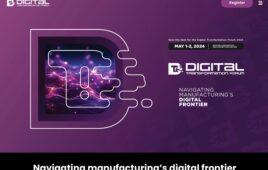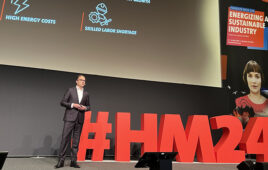Jack Creamer, Market Segment Manager – Pumping Equipment, Schneider Electric
Many operators of industrial sites are challenged with making their plants more competitive. Issues such as energy waste, unanticipated downtime and inefficient processes all emerge as top of mind. Although these challenges are significant, taking on these issues is now less daunting and more cost effective thanks to new Industrial Internet of Things (IIoT) capabilities.
The area of asset management provides a prime example of how IIoT data exchange and smart machine concepts can be applied to business problems. When aligning business processes to enable data capture and analysis it all starts with the individual assets. As more individual assets are enabled, site-wide processes become more efficient and productive.
Assets can be described at traditional factory floor applications and remote process applications. An example of traditional factory floor applications would be the machines and equipment you would find in food and beverage processes. The applications for this type of industry enable users to centralize inputs to one location, while enabling machine level analysis for periodic monitoring.
With remote process applications, the monitoring equipment is typically installed in rural locations. Thus, benefits are centered around maintenance enhancement but include maintenance cost reduction and improved process uptime.
A critical success factor for remaining competitive is the ability to gather greater volumes of data, to analyze that data in new and different ways, and to utilize the results of that analysis to drive quick decisions.
Thus, in addition to sensors, engineers will need to connect various smart devices such as PLCs, smart HMIs and smart VFDs that can gather the data and send it to remote locations via web servers or other digital means.
Design choices will involve:
1) An understanding of the key operating parameters to measure to insure optimal uptime
2) Understanding how to monitor these parameters – use of sensors, and so on.
3) Understanding the measures and when to act
4) Technology used to gather the data – local and remote
Asset performance management tools enable predictive maintenance
Some of the new asset management tools are now available as a cloud-based service. In the past, asset management centered around either reactive (if it breaks, get it fixed as soon as possible) or scheduled maintenance. Now a more cost-effective model has emerged: predictive maintenance. That is, replacement of worn components at exactly the right time, just prior to end-of-life or prior to unanticipated downtime.
To enable predictive maintenance, devices must be capable of communicating their status. Then, that data must be analyzed. Advanced asset performance monitoring is built on these three layers of analysis:
- Gather the data. The first layer uses asset specific algorithms, rules and thresholds (derived from many data points gathered over time across many sites) to gauge the performance of the assets (for example, how long that motor will last, or whether warning signs are being detected).
- Interpret the data. The second layer consists of a Service Bureau, which is manned by a team to determine if the event the system has detected is a normal condition, or whether it requires additional investigation.
- Analyzing the exceptions. The third layer, engaging a remote expert, is employed If more investigation is required. The expert analyzes the data, determines the root cause, and develops a detailed event report.
The cloud-based asset management model is scalable. An industrial site can start small and only be billed for the amount of monitoring that is required (4 or 5 pumps for example or, if the electrical system is being monitored, the main breakers). Then, as time goes on, more assets can be easily added until site-wide or multiple site monitoring is in place.
Once it is determined through monitoring that maintenance needs to be performed, the world of the on-location service person is also made simpler. A service engineer, in front of a machine, can pick up an iPad and point the built-in camera at the equipment. The iPad will then pop up a visualization of the equipment inside the cabinet. It tells the service engineer, “Here is drive A, there is actuator B.” The engineer taps the piece of equipment on his screen and the relevant data he needs appears. That information could be the history of that particular drive, with information regarding how it’s been behaving over the last 14 days. On the screen, he sees a visual model of the equipment and, although he’s never seen this machine before, he knows how to repair it. See an example of this live augmented reality end user solution deployment.
This scenario presents two key business benefits. The first is the avoidance of unnecessary and costly machine downtime (by being able to open cabinet doors virtually, without disruption to the ongoing process). The second is to address maintenance challenges faster and more accurately by providing instant access to relevant maintenance information and support materials (like user manuals, instructions and diagrams).
Schneider Electric
www.schneider-electric.us
Filed Under: IoT • IIoT • Internet of things • Industry 4.0





Tell Us What You Think!